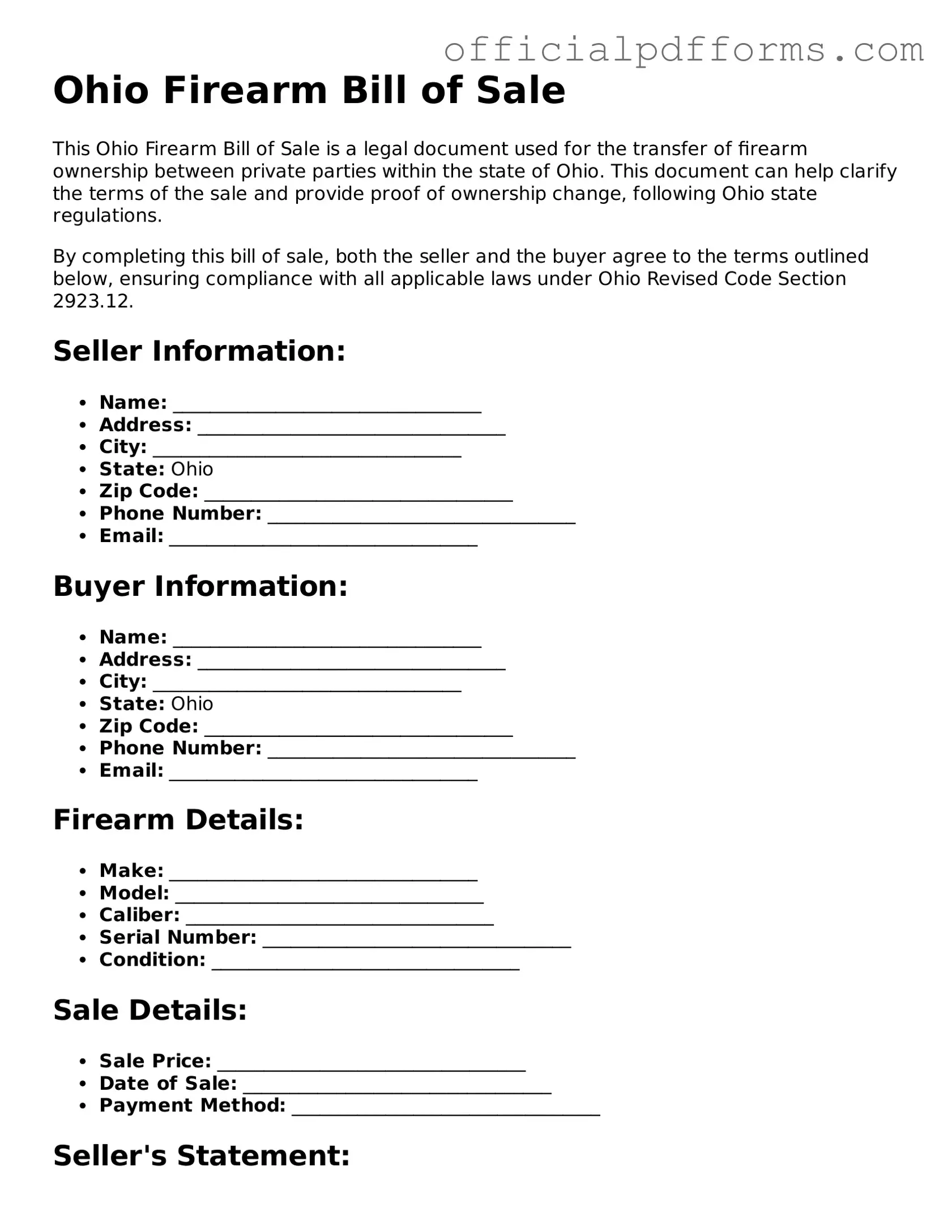Printable Ohio Firearm Bill of Sale Template
The Ohio Firearm Bill of Sale form is a legal document that records the sale of a firearm between a buyer and a seller in Ohio. This form helps ensure that the transaction is documented, providing protection for both parties involved. If you're ready to complete your firearm sale, fill out the form by clicking the button below.
Access Form Online
